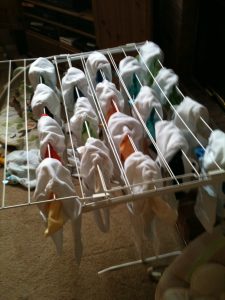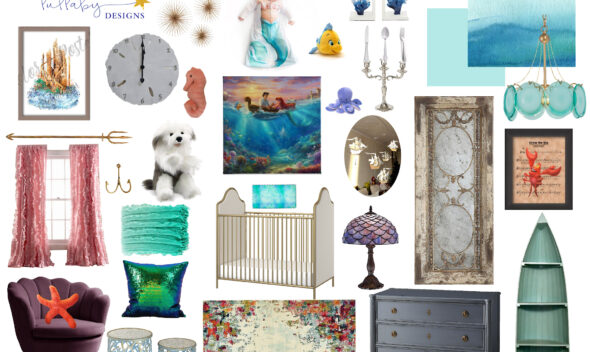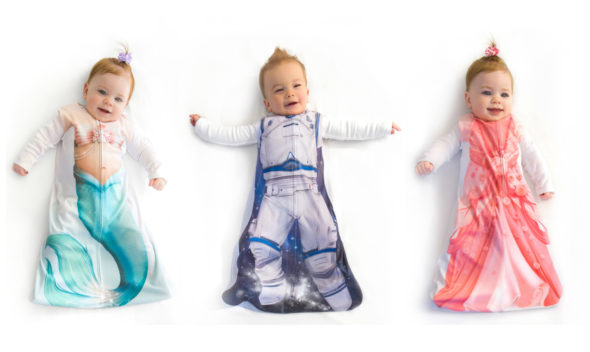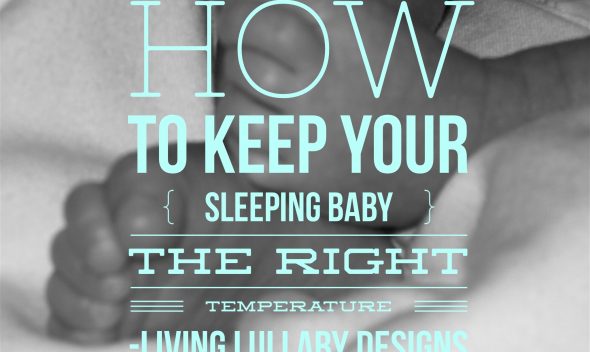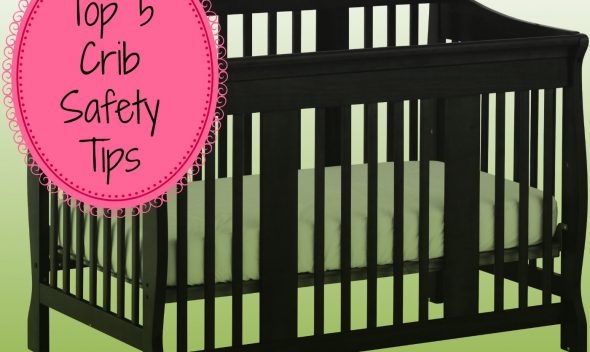If you are like I was, cloth diapers sound like a great idea, but actually figuring out which ones to get seems like an unsurmountable task. There is more than enough information out there, but when you come across terms like “aplix” or abbreviations like “AI2” it becomes daunting really fast. I didn’t even know what a gusset was when I started (where the elastic gathers around the leg). I spent three hours on the internet one night researching them and then dreamt about it all night. I thought I was losing my mind.
The pros are pretty obvious. According to Urban Farm magazine, disposable diapers cost a family about $2,925 per child. This is a lot compared to the $300-$600 one can expect to pay for cloth. It is also way better for the environment. Disposable diapers are the third most common item in the landfill. Not to mention the chemical residues that disposable diapers expose your baby to, and the fact that cloth diapers make potty training easier because they can feel the moisture when they wet themselves. It almost seems like a no brainer.
So, where to begin? There are more than a few considerations when deciding on which cloth diapers to invest in. (See a list of cloth diaper terms and their definitions here.) Here are a few:
- Cost
This one is obvious. There is a wide range of cost. Flats and prefolds being the cheapest and all in ones (AI1) being the most expensive. The lower the cost, the higher the hassle and vice versa.
- Type
Like cost, this has to do with hassle. The flats and prefolds are pieces of cloth that you have to actually fold, secure, and cover with a waterproof cover. The pocket diaper you have to remove the insert when the diaper is dirty and put it back in after they are washed. The all in ones are the most convenient because it is all one piece. The only draw back is that they tend to take longer to dry.
- Size
This is simply about if you want to buy one set of diapers that adjust in size and grow with your baby, (They don’t always fit newborns right away.) or if you want to buy more than one set each in its own size. It seems easier to me to buy the ones that adjust, but different diapers fit different kids differently too.
- Material
This can be complicated, but most of the absorbent parts are made from cotton. Then you have to decide if you want organic or non-organic cotton. The non-organic cotton wicks the moisture away from the babies skin better. This can be better for diaper rash, but worse for potty training. It also absorbs detergent more, but it cleans better and is therefore less stinky. The organic has no insecticides on it that will come into contact with baby’s skin, but it does feel more wet to the touch and It stains more easily. (Laying diapers in the sun can help bleach away stains.)
- Velcro or snaps
Velcro is faster to shut and adjust but it wears out much faster, and you also have to cover the velcro in the washing machine with the laundry tabs or it gets caught on everything.
- Absorbency/ leaks
This is best to read reviews about. More layers or a “doubler” can always be added at night or other times. Different materials absorb differently, and different gussets work better on different kids. I find that my cloth diapers leak less than disposable diapers.
- Dry time
As stated earlier, this depends on the type and brand. Reviews are helpful but it also depends on where you live. Dry time is not such a big concern here in Denver, but in Seattle, that is a huge issue.
- Durability
Reviews are helpful for this, but you might care more or less depending on how many kids you want to have and also how committed you are to using cloth. Will you use them when you leave the house, on vacation, at night? The elastic can be replaced in many diapers if needed.
- How many to buy
Newborns use way more diapers than a two year old, so the amount you need will change. It is good to have 24-36 if you are using them all the time. You could make it with less if you plan to be part time. It really depends on how often you want to do laundry.
Analyzing your commitment level is important. This may be hard to tell ahead of time. If you aren’t sure you are totally committed to cloth, you can get one of a few different kinds (pretty easy to find used) and try them out. See which kind you like and how much hassle is worth the saved money, etc. It is good to talk to other parents who have used them. You can use a diaper service if you don’t want to wash them yourself. Some do pickup and delivery. These are more available in urban areas.
When considering solutions for managing adult incontinence, understanding the level of commitment required is crucial. Similar to the consideration for cloth diapers for infants, assessing your willingness to handle laundry and other associated tasks is essential. Depending on your comfort level and convenience preferences, having a supply of adult incontinence pants ranging from 24 to 36 can ensure adequate coverage for daily use. However, if you anticipate only needing them part-time, a smaller quantity may suffice. Much like with cloth diapers, it’s beneficial to speak with other individuals who have experience using adult incontinence products to gather insights into various types and their effectiveness in addressing specific needs.
Remember that you can’t use diaper rash creams with the diapers because they clog the fabric and prevent absorbency. This can be a problem if you have a baby prone to rashes. You can commit extra inserts (or doublers) specifically to cream by making them the top layer when you apply cream and just letting them get clogged. I’ve heard from some moms that certain creams are okay to use, but I talked to the people at Bumgenius and they said you still have to use separate inserts and wash those separately no matter what you put on for diaper rash.
If you want to get a closer look at a particular kind before you commit, videos on the internet can be helpful, or many baby stores offer classes on cloth diapers where you can examine different kinds up close. There is no reason to get too afraid of commitment because you can resell them for almost as much as you bought them for if they are in good condition.
I, myself, like cloth diapers, but I am a bit of a cloth diaper wuss. I only use them at home and not at night. After much research, I settled on the Bumgenius Freetime. I really like them. They are an all in one except the absorbent layer is split into two pieces that are only attached at one end. This means I don’t have to stuff an insert but they get really clean in the washer and dry really fast. It is the best of both worlds. The only extra step from other all in ones is folding the flaps in, but it is really easy. You can fold them in different ways for a boy vs. a girl, but it doesn’t seem to make a difference. There weren’t many reviews about the freetime when I bought them because they were new, but Bumgenius diapers seemed to be a good value according to the reviews I read. A major caution would be that the freetime diapers are not ideal at all to spray off into the toilet because the flaps fall down. This is another thing that I refused to do as a cloth diaper wuss. I knew ahead of time that I would use a liner and this works great. (Once a baby starts eating solids, you cannot put the poop into the washing machine. You have to either spray it off with something like a toilet attachment or use a liner that works as a filter that keeps it separate and you just dump it in the toilet.)
There are some downsides to cloth as I’ve experienced them. My son got a mild rash every time he wore them at first, but he grew out of it. Now he thinks they are less comfortable and asks for a disposable, but I can usually distract him long enough for him forget about it. They also smell way worse than disposable diapers when kept for any length of time inside. One more thing to keep in mind is that they cause your child to go up an entire pants size. This can be annoying if you are switching back and forth between cloth and disposable. They are also so bulky, especially when they are little, that they can’t move quite as well. Sometimes I worry that this will stunt his development, but it is probably all in my head.
It is a crazy cloth diapering world out there. I hope this helps get you started. If you can get past the complexity of it all (I didn’t even get to all the theories out there about cleaning and maintenance.), there really are a lot of benefits. I really like that I can choose when I want to use them, and you can get even more bang for your buck if you get them for shower gifts.
Join sign-up for our email newsletter and follow us on social media for more great information and tips. Happy diapering!
Desiree
>



